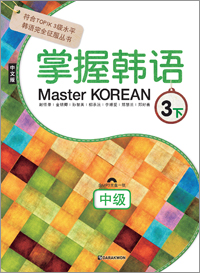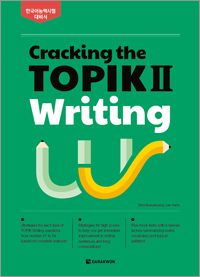“우리 N빵하자!” “진실의 미간이 나오네!”
How well do you know these kinds of expressions that Korean people naturally and frequently use? Even if you are diligently studying Korean, when you see Korean subtitles on YouTube or read Korean comments on Instagram, it’s easy to feel like you are missing something. As our daily lives have changed since the advent of smart devices, frequently used words and phrases have also changed. “Everyday K-Lingo” reflects these changes, selecting the theme of “new daily life” using smartphones, social media, online shopping, content streaming platforms, delivery apps, KakaoTalk, etc. and including vocabulary and expressions that are frequently used in that daily life.
However, just because one knows a lot of words doesn’t mean that one can express them easily. For example, if you want to say, “I left a comment on my favorite celebrity’s Instagram,” you need to know the vocabulary word for “comment” (“댓글) as well as the expression “to leave a comment” (“댓글을 달다”), and then you need to know how to connect “Instagram” and “to leave a comment” with the particle “에.” In this way, you must remember chunks of meaning rather than individual vocabulary units so you can quickly speak in Korean about a situation or action that comes to mind. To this end, “Everyday K-Lingo” presents vocabulary words in meaningful groups rather than as individual words.
In addition, the book uses vivid Korean expressions to construct dialogue in a variety of situations, enabling students to learn how to use expressions in specific situations. It also includes rich Korean expressions such as “배 터질 것 같아 (I feel like my stomach is going to explode)” as well as non-standard words, buzzwords, and new words such as “찐맛집 (a truly delicious restaurant).” You will be able to naturally improve your Korean skills by reading interesting dialogues presented in 4-panel cartoons as easily as reading a webtoon, as well as by listening to audio files provided through QR codes.
* Learn real Korean that Koreans use in their daily lives!
The Korean language that Koreans actually use in YouTube subtitles, Instagram comments, and KakaoTalk conversations is usually difficult to learn from books. In addition, because there are many abbreviations, non-standard words, buzzwords, and new words, it’s often difficult to understand them unless you learn how to use them in certain situations. “Everyday K-Lingo” covers a variety of vocabulary words and expressions that Koreans frequently use in daily life, helping you learn real Korean.
* Learn chunks of meaning so you can connect them in conversation!
Just because you know a lot of vocabulary words doesn’t mean that you can easily express what you want to say. This is because it is difficult to lead a conversation if you do not know which vocabulary words are used together and which particles you must use to connect them. To this end, “Everyday K-Lingo” presents vocabulary in meaningful groups rather than as individual words. By recalling the chunks of meaning that you’ve memorized according to a specific situation or action, Korean conversation will be able to flow smoothly from your mouth.
* Naturally learn Korean expressions in specific situations through 4-panel comics!
By expressing specific situations from daily life through cartoons, this book makes it possible to learn Korean expressions in a fun and natural way. If you read it casually as if you were reading a webtoon and use the QR codes to listen to lively audio clips recorded by professional voice actors, you will be able to effectively learn daily conversation situations of Koreans.







.jpg)




